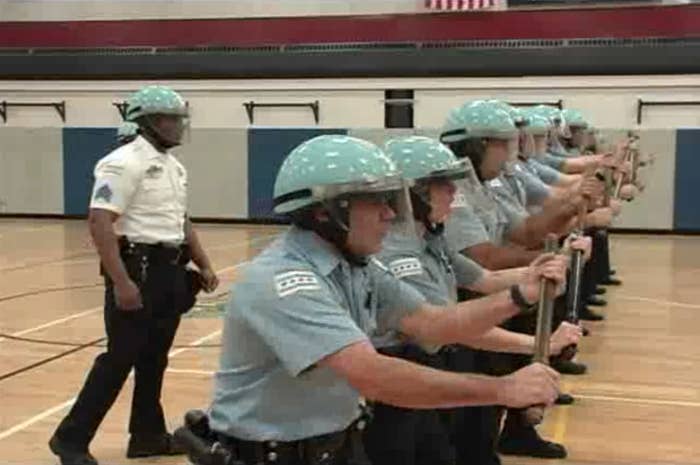
Regardless of the results of the 2020 election, it’s possible that the United States will see civil unrest in its aftermath. Some activists fear that police will use the same violent tactics that were used to respond to the Black Lives Matter protests that followed the deaths of Breonna Taylor and George Floyd earlier this year.
To find out how police are preparing to respond to postelection protests, BuzzFeed News filed public records requests with six major departments.
So far, only one has responded.
BuzzFeed News has journalists around the US bringing you trustworthy stories on the 2020 elections. To help keep this news free, become a member.
BuzzFeed News received over 100 pages of documents from the Chicago Police Department, as well as a video, showing how police in the most populous city in the Midwest are preparing for unrest on election night. In many ways, Chicago stands in for any large American city since the materials use official protest guidance from the Department of Homeland Security and the US Army that aren’t particular to Chicago.
A Chicago police spokesperson told BuzzFeed News that every sworn officer will be on duty on Nov. 3 into the morning of Nov. 4.
In a press conference on Oct. 15, Chicago Police Superintendent David Brown said officers have done several workshops preparing for Election Day. It’s unclear if these workshops incorporated the material obtained by BuzzFeed News.
“The presence of organization within a team can intimidate the opposition.”
“We're trying as best we can to anticipate any hazard that might happen — including a weather hazard, snow might happen in our city, along with anything related to protests [or] embedded agitators that may loot, cause violence, or destroy property,” Brown said.
One 64-page document, titled "Crowd Control and Behavior," contains the outline for an eight-hour course in which officers were taught how to control protests and arrest demonstrators.
“The presence of organization within a team can intimidate the opposition,” it says. “Using team tactics has a military type advantage over larger organized groups.”
In addition to the documents, Chicago police released a training video that instructs officers how to push and thrust batons at protesters.
The Chicago Police Department's crowd control training video
One section of the "Crowd Control and Behavior" document outlines strategies for a “Mobile Field Force unit,” a group of police officers who carry weapons (like batons and pepper spray) and use platoon-style tactics to address “civil disorder.”
“A military bearing demonstrates to the protesters that the MFF is a well-disciplined and highly trained group,” the document says.
The document does note that police must be aware of people’s First and Fourth Amendment rights while they protest. But if the public peace is disturbed, police have the legal right to make arrests. The "Crowd Control and Behavior" document notes that “mob action” is defined under Illinois law as “disturbing the public peace” or damaging property while in a group.
Military-style tactics are not unusual within US police departments, and the document covers several different formations that police may use to control crowds. The documents refer to a group of police officers as a platoon, which is led by a sergeant or captain. The formations include column, skirmish, wedge, and encirclement.
The "Crowd Control and Behavior" document also defines several types of demonstrator groups and identifies many by name. It labels ACC, Globalize This, South Dakota Radicals, Food Not Bombs, Black Cat Collective, Black Cross, North Eastern Federation of Anarcho-Communists, and Act Now to Stop War and End Racism (ANSWER) as “anarchist” groups. It defines anarchists as those who “believe private property is theft, state property is an object for the protection of corporate interest, and that both must be destroyed for the creation of a society based on mutual aid and individual liberty.”
The "Crowd Control and Behavior" document says that these protesters try to manipulate the media and provoke police by prominently positioning children and older people “to gain sympathy and negative portrayals of police dispersal and arrest actions.” It also claims that protesters accuse the police of misconduct “to avoid arrest and gain the sympathy of the media and bystanders.”
The document advises that some violent demonstrators may use wrist rockets, catapults, incendiary devices, impact weapons, mirrors, hazardous substances, battering devices, fireworks and rockets, weapons of mass destruction, suspicious packages, golf balls, bottles, cans of soup, and pieces of concrete as weapons during protests.
It’s common to see legal observers, such as lawyers or law students, at a protest. But the document says that legal teams may try to “intimidate” police by telling them that their “tactics are illegal.”
The document notes that it’s legal to use pepper spray on protesters who are “passively resisting” police officers, even if they aren’t doing anything violent.


